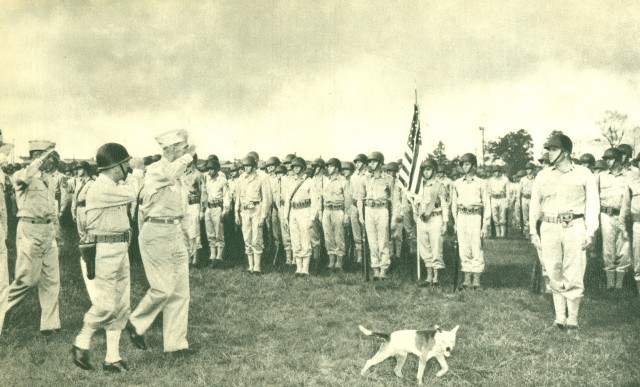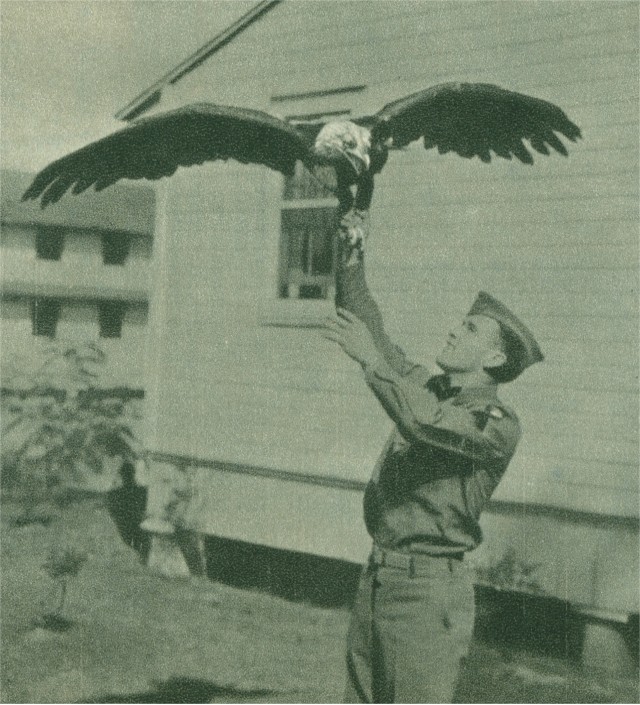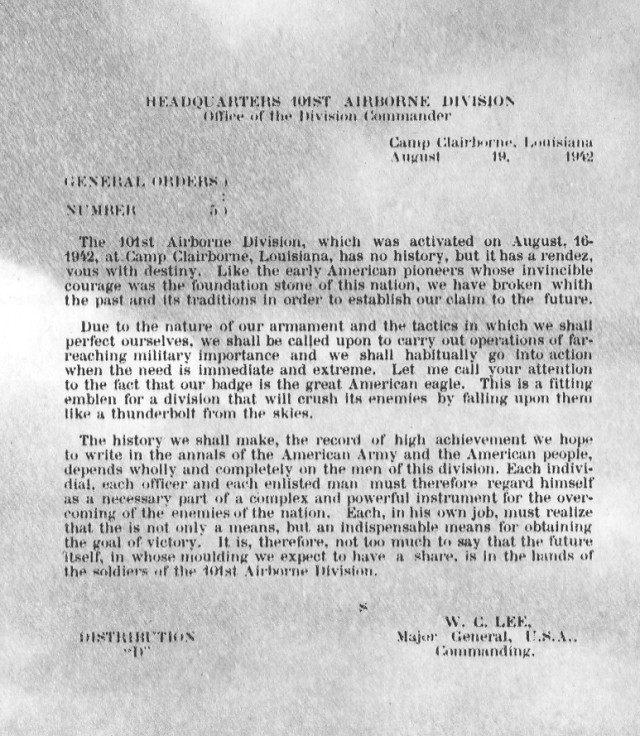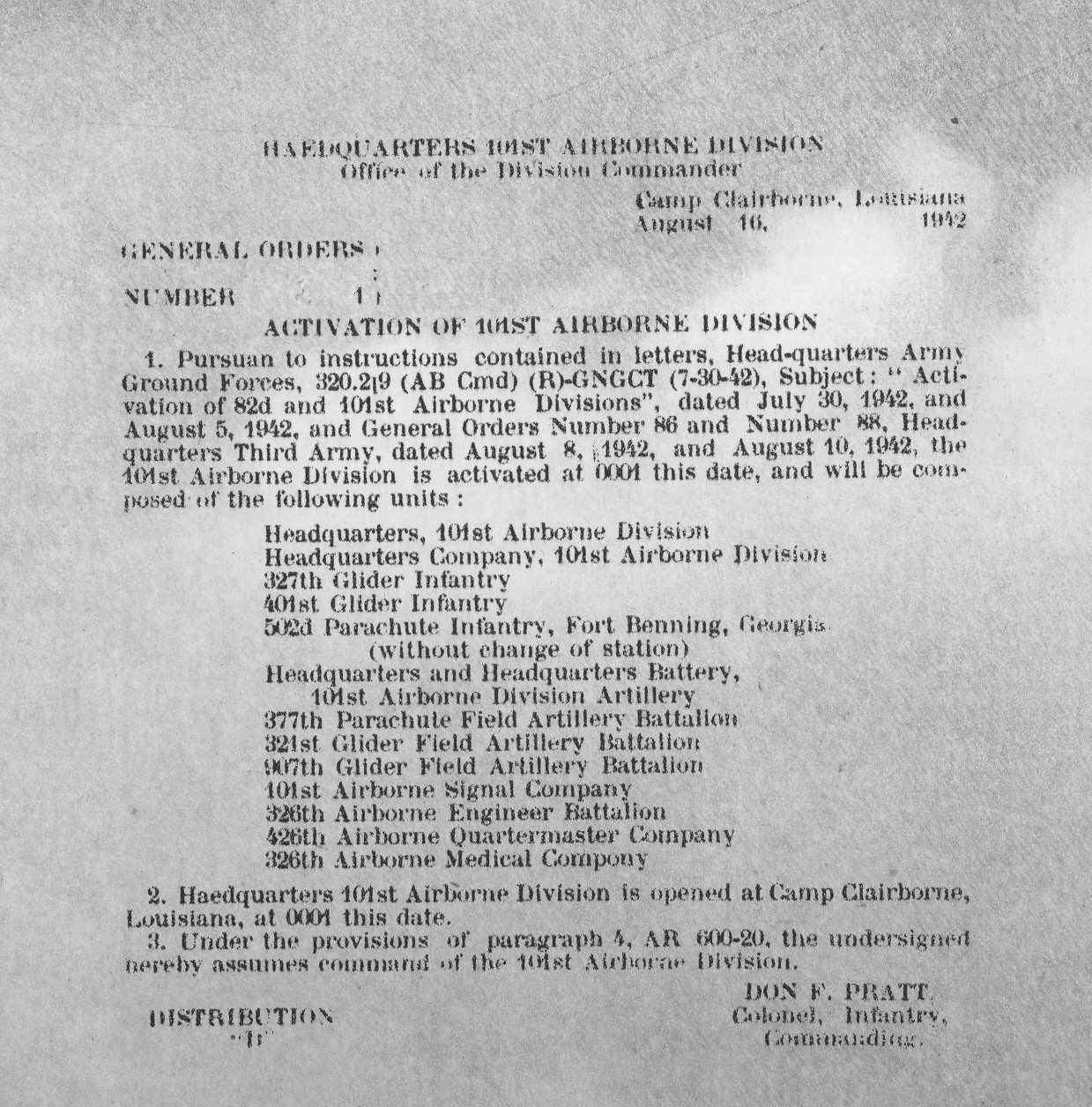In his first address to his Soldiers, Maj. Gen. William C. Lee of the 101st Airborne Division declared prophetically in General Order Number 5, dated Aug. 19, 1942, that "the 101st Airborne Division, which was activated on August 16, 1942, at Camp Claiborne, Louisiana, has no history, but it has a rendezvous with destiny."
Thus began the now-storied history of one of the United States Army's finest combat divisions.
The activation of the 101st and the re-designation of the 82nd as airborne divisions were the culmination of the U.S. Army's efforts to establish airborne operations. Even though the idea of using airborne operations had been around since World War I, the U. S. Army did not fully embrace the idea until the Soviet Union and German Armies began to develop their airborne operations during the 1930s.
The successful use of airborne tactics early in World War II by the German Army spurred the U.S. Army into action. On June 25, 1940, the Parachute Test Platoon was formed at Fort Benning, Ga., to experiment with the potential use of airborne troops. On Aug. 16, 1940, the first successful parachute jump by an American Soldier was accomplished. Two years to the day after the jump, the 101st Airborne Division was activated to develop division-level airborne warfare tactics.
During and since World War II, the 101st has answered Lee's call to service. In World War II, the 101st first participated in combat during D-Day operations on June 6, 1944. The 101st went on to distinguish itself during multiple campaigns, but is especially known for its defense of Bastogne, Belgium, during the Ardennes Campaign. The 101st culminated its World War II service capturing Adolph Hitler's famed "Eagle's Nest" mountain retreat in Berchtesgaden.
As the U. S. Army has reconfigured and enhanced its capabilities since World War II, so has the 101st. In 1956, the 101st became the first pentomic division, the United States Army's organizational answer to the growing nuclear threat present in the world. In September 1968, the 101st was redesignated the 101st Airmobile Division to conduct jungle operations in Vietnam.
Again, the 101st distinguished itself in battle in the A Shau Valley, Dak To, Dong Ap Bia Mountain (Hamburger Hill) and Tuy Hoa.
In 1974, the 101st was redesignated the 101st Airborne Division (Air Assault) and has maintained that designation to the present day. In 1991, during Operation Desert Storm, the Division was called upon to fire the first shots of the operation, taking out Iraqi radar stations on the border between Saudi Arabia and Iraq. Throughout current operations, the 101st has continued its long tradition of excellence in battle in places such as Mosul, Kirkuk, Diyala Province and the Al Anbar Province.
From the beaches of Normandy to the deserts of Iraq, the 101st Airborne Division has and will continue to answer its call to a "rendezvous with destiny."
Related Links:
Vietnam 40 years later: 101st Airborne Division veteran recalls Hamburger Hill








Social Sharing